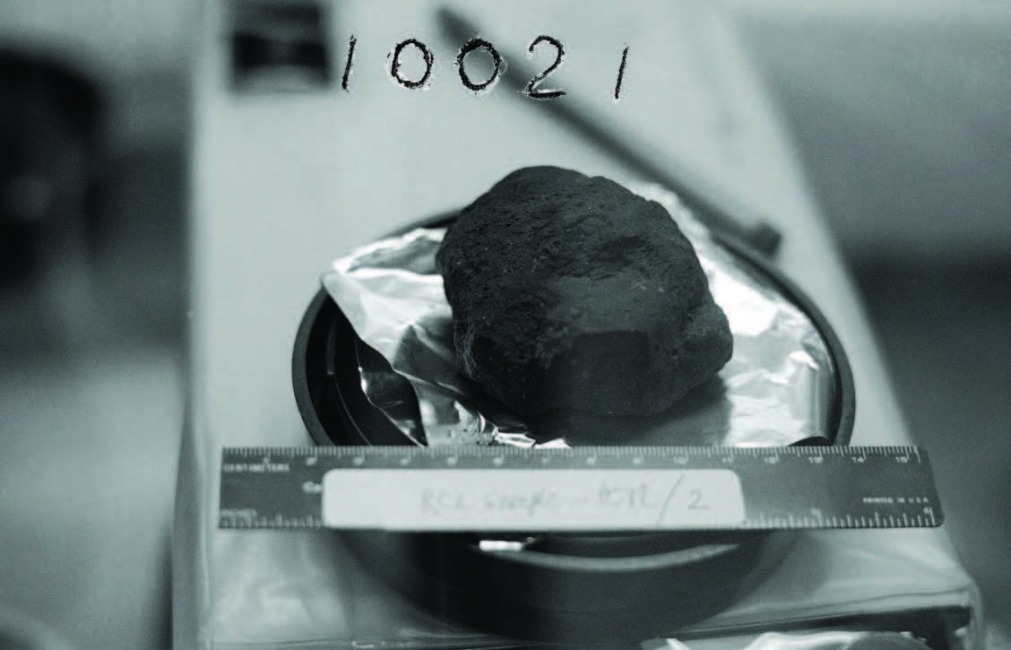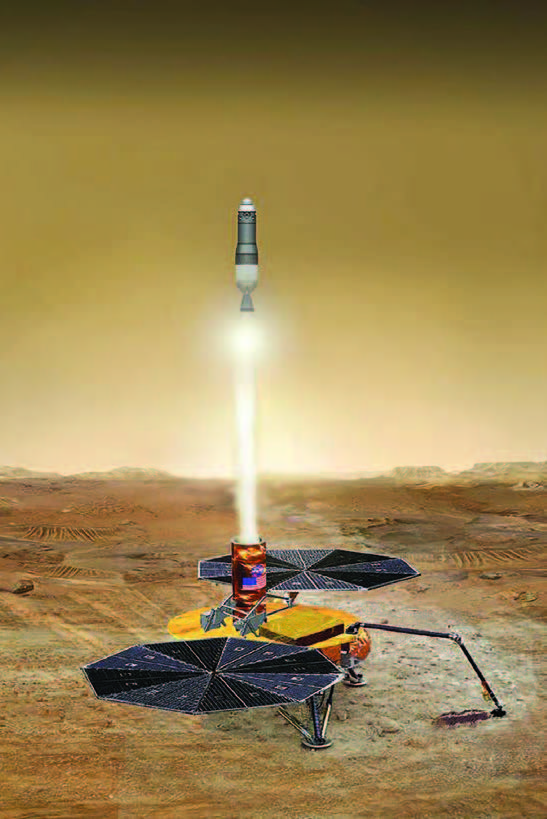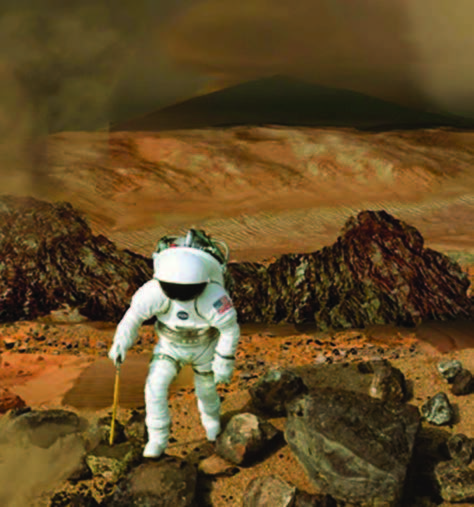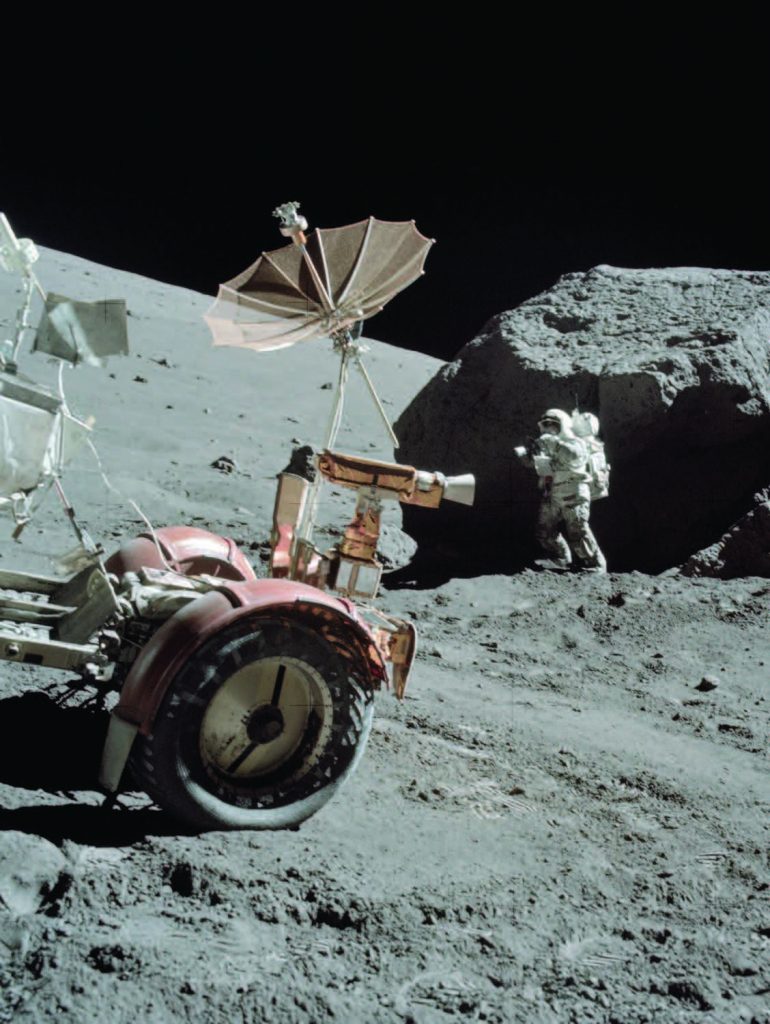All Over Earth, Collecting Rocks from Space

Header Image: This is probably the first Moon rock picked up by Neil Armstrong as part of the “contingency sample.” Because the collection was so hurried and the documentation sparse, NASA scientists are not completely sure of the identification. Credit: NASA
The Apollo missions sent humans to the Moon 50 years ago. Getting there required the work of people all over the nation, including NASA employees, engineers, specialists with contractors in the aerospace industry, university scientists, and many others. One of the primary accomplishments of the Apollo missions was the collection of rocks from the lunar surface. But that is just one way we have touched space. People with diverse skills continue to come together to bring home samples from the Moon, asteroids, and other worlds.
While international politics were a major motivation for the race to land humans on the Moon, scientific goals strongly shaped the details of the exploration strategy. Within the first ten minutes of Neil Armstrong’s initial historic sojourn onto the lunar surface, even before Buzz Aldrin joined him outside the lunar module, Armstrong scrambled to collect a “contingency sample” of Moon rocks in case an emergency cut their visit short. Between 1969 and 1972, the six successful Apollo missions returned more than 382 kilograms (842 pounds) of Moon rocks and soil.

Sample return missions like Apollo offer several incredibly important scientific advantages over remote sensing programs or even robotic spacecraft visits that test samples on site. First, the ultra-miniaturized instruments on robotic spacecraft, while impressive in their capabilities, do not match the abilities of much larger and better-calibrated instruments in terrestrial laboratories. Indeed, some of the studies on Earth are accomplished using miles-long particle accelerators. Second, the availability of multiple portions of samples allows scientists to replicate the work of their colleagues to confirm especially interesting discoveries—an essential part of the scientific process. Third, the direct retrieval of specimens from known places on known bodies lets scientists put them into their proper planetary and geological contexts. And finally, the archiving of samples for future investigations will allow them to be studied by future generations with techniques that have yet to be invented.
THE ASTEROID CONNECTION
The Apollo lunar samples are not the only otherworldly materials in collections on Earth. Three successful Soviet robotic missions in the early 1970s also returned small but scientifically interesting amounts of lunar rocks and soil. Moving further afield, in 2010 the Japanese Space Agency Hayabusa spacecraft brought back hundreds of microscopic fragments of rocky dust from the near-Earth asteroid Itokawa, the first (and still only) sample return mission from an asteroid. Importantly, that mission provided the first “ground truth” showing that Earth-based methods of remote sensing can successfully predict an asteroid’s composition. In 2006, the NASA Stardust spacecraft returned many thousands of tiny samples of dust from Comet Wild 2 and dozens of interstellar dust particles. Some of those particles contain minerals that must have formed under high temperatures, indicating that the distant, icy Solar System may not be as pristine a reservoir as once thought.
In addition to these directly-retrieved samples, nature itself has been delivering extraterrestrial material to Earth throughout its history in the form of meteorites and interplanetary dust particles. More than 50,000 meteorites have been cataloged in the world’s scientific collections. However, because most of these meteorites orbit chaotically for millions of years before hitting Earth, it is generally impossible to tie an individual meteorite to its parent body, eliminating their useful geological context. Nonetheless, these are still extraordinarily important scientific specimens that contain unique information.
Among the many results coming from the Apollo (and other) samples is an understanding of the history of the formation of our Solar System, including the Earth and the Moon, and our subsequent barrage by massive asteroids. We know that the Earth and Moon formed from rocky and metallic material about 4.6 billion years ago, that the Moon formed an early solid crust within a few hundred million years after that, and that a “late heavy bombardment” of asteroids lasted until about 3.8 billion years ago and produced most of the largest craters on the Moon. Lava flows, active as recently as a billion years ago and spreading much more quickly and with about the viscosity of motor oil on Earth, filled low-lying craters and depressions over much of the near side of the Moon’s surface, creating the dark basaltic regions called maria that make up the features of the “man” or “rabbit on the Moon.”

BETWEEN A ROCK AND A CLOUD OF VAPORIZED PLASMA
Some of the most exciting research enabled by lunar samples has been to try to understand the common history of Earth and the Moon. The presence of a large companion like the Moon has long been a puzzle, with the leading hypothesis being that a titanic collision between the early Earth and an incoming Mars-sized object blasted enough vaporized material into orbit that it eventually coalesced into the current form of the Earth-Moon system. A major stumbling block for that theory has been that the detailed compositions of Earth and Moon rocks, namely their ratios of oxygen isotopes, are incredibly similar. Other Solar System bodies have distinctly different isotopic compositions, and scientists have been uncomfortable to accept that the early Earth and its massive impactor just happened to have identical makeups.
A new refinement of the giant impact hypothesis—proposed by scientists Sarah Stewart and Simon Lock and nicknamed the “synestia model”—holds that the collision between these early planet-sized bodies was so energetic that it produced a cloud of vaporized plasma that survived for an extended period of time, long enough for the material in what would become our planet to thoroughly mix with the nascent Moon, equilibrating their compositions.

We are entering a new golden age of sample return missions by many more nations than the past. Two spacecraft, the Japanese Space Agency’s Hayabusa2 and NASA’s Osiris-REx, are already orbiting near their target asteroids and should return samples from them in 2020 and 2023 respectively. Two Chinese robotic missions currently in development are planned to recover specimens from the Moon in the early 2020s, and longer-term (though currently unfunded) proposals by NASA and others for sample return missions from the Moon and Mars may get off the ground in the next decade or so.
People at space agencies and research centers around the world work on collecting and protecting rocks from space. As we continue to explore the Solar System, we will continue to learn from these precious samples from other worlds.






